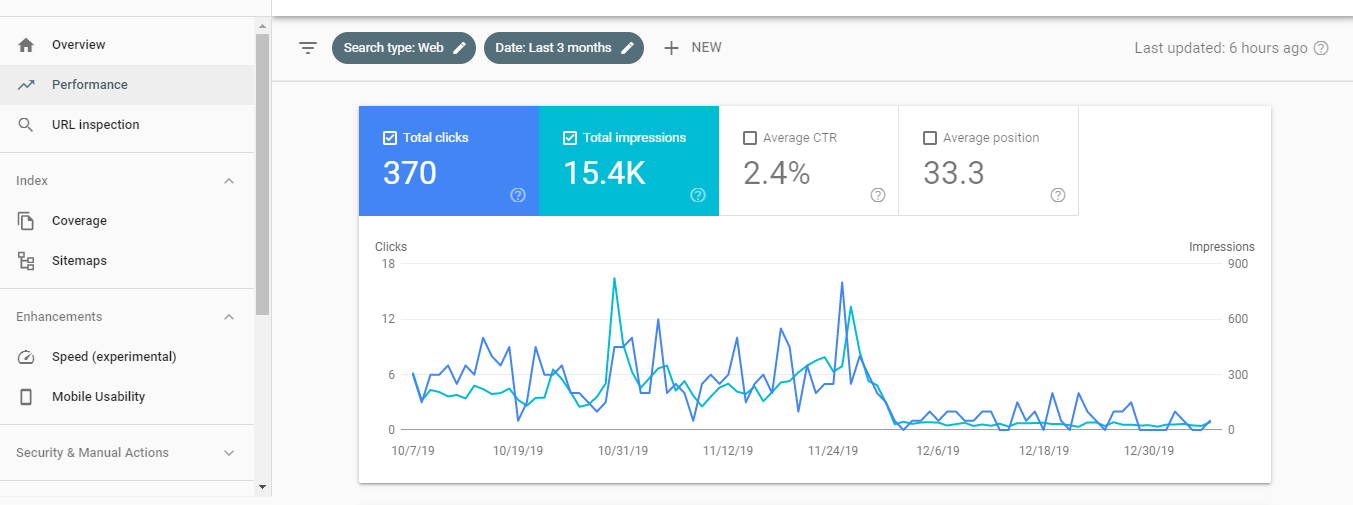SEO monitoring tools are your digital sidekick for tracking your website’s performance on search engines like Google. Think of them as a dashboard that shows you how well your website is doing in terms of search rankings, traffic, and overall visibility. These tools provide invaluable insights into various aspects of your online presence, helping you identify areas for improvement and make data-driven decisions to optimize your SEO strategy. By leveraging these tools, you can stay ahead of the competition and ensure your website is reaching its full potential.
Understanding Key SEO Terms
If you’ve ever dipped your toes into the world of digital marketing, you’ve probably heard the term SEO thrown around a lot. But what does it actually mean? And more importantly, how can you understand all the jargon that comes with it? Don’t worry—whether you’re new to the SEO game or just want to refresh your knowledge, this guide will break down some of the key SEO terms in a simple, friendly way.
- SEO (Search Engine Optimization)
Let’s start with the basics. SEO is the process of improving your website so that it ranks higher in search engine results (like Google). The better your SEO, the more likely people are to find your site when they search for something relevant. SEO involves tweaking your content, structure, and other elements of your site to make it more attractive to search engines. - Keywords
Keywords are the words and phrases that people type into search engines when they’re looking for something. For example, if you have a blog about baking, relevant keywords might be “easy cake recipes” or “how to bake bread.” Including these keywords in your content helps search engines know what your site is about and match it to what users are searching for. - On-Page SEO
This refers to all the SEO techniques you apply on your website itself. It includes things like:
– Optimizing title tags and meta descriptions (more on those in a bit)
– Using keywords strategically in your content
– Making sure your site loads quickly and is mobile-friendly In short, on-page SEO is all about making your website as search engine-friendly as possible. - Off-Page SEO
While on-page SEO focuses on what’s happening on your site, off-page SEO is about improving your SEO through activities outside your website. This often involves building backlinks (links from other websites to yours), which help search engines see your site as trustworthy and authoritative. The more quality backlinks you have, the better your SEO. - Backlinks
Speaking of backlinks, these are simply links from other websites that point to your site. Search engines see backlinks as votes of confidence. If lots of reputable sites are linking to your content, it signals that your site has valuable information. However, not all backlinks are created equal—links from high-quality, relevant sites are much more powerful than links from low-quality sources. - Meta Title & Meta Description
The meta title and meta description are bits of text that describe your web page. These show up in search engine results, giving users a quick snapshot of what your page is about.
– Meta Title: This is the clickable title that appears in search results. It should be catchy, include your main keyword, and stay under 60 characters.
– Meta Description: A brief summary (under 160 characters) of what your page is about. It doesn’t directly affect rankings but can influence whether people click on your link. - Alt Text (Alternative Text)
Search engines can’t “see” images like we do, so they rely on alt text to understand what’s in an image. Alt text is a short description you add to an image’s HTML code, which not only helps with SEO but also improves accessibility for users with visual impairments. - SERP (Search Engine Results Page)
This is simply the page that you see after you type a query into a search engine like Google. The SERP includes a list of results that the search engine believes best answer your query. Your goal with SEO is to make your site appear as high as possible on the SERP, ideally on the first page! - Organic Traffic
When someone visits your site after clicking a non-paid search result (i.e., not an ad), that’s called organic traffic. SEO is all about increasing your organic traffic by making your site more visible in search engine results without having to pay for ads. - Crawling and Indexing
Crawling and indexing are how search engines explore and understand your website.
– Crawling: Search engines use bots (called crawlers or spiders) to scan websites and gather information about them.
– Indexing: After crawling, the search engine stores that information in its database (or index) so it can quickly pull it up when someone searches for something relevant.
If your site isn’t indexed, it won’t show up in search results, so ensuring your site is easy to crawl is key to good SEO. - Bounce Rate
Your bounce rate is the percentage of visitors who land on your site and leave without clicking on anything or visiting another page. A high bounce rate could mean that your site isn’t engaging enough or that people aren’t finding what they’re looking for. Reducing bounce rate is important because search engines like Google may use it as a signal of how valuable your content is. - Page Speed
Page speed refers to how quickly your website loads. Slow-loading sites frustrate users and can hurt your SEO rankings. Google and other search engines prioritize websites that load quickly, especially on mobile devices, so optimizing your site’s speed is a must for good SEO. - Mobile Optimization
With more people browsing the internet on their phones, mobile optimization is super important. This means making sure your site looks great and works well on mobile devices. Google’s algorithm favors mobile-friendly sites, so if your website isn’t optimized for mobile, it could hurt your SEO. - Long-Tail Keywords
Long-tail keywords are more specific, longer keyword phrases that target a niche audience. For example, instead of just “cake recipes,” a long-tail keyword might be “easy vegan chocolate cake recipe.” These keywords are less competitive and can attract more qualified traffic because they target users who are searching for something specific. - Local SEO
Local SEO focuses on optimizing your online presence to attract more business from relevant local searches. For instance, if you own a coffee shop in Chicago, you’d want your website to show up when someone searches “best coffee shop in Chicago.” Local SEO involves optimizing for location-based keywords, creating a Google My Business listing, and ensuring your contact details are consistent across the web.
SEO might seem overwhelming at first with all its technical terms, but once you understand the basics, it’s much easier to grasp. Whether you’re working on improving your website’s on-page SEO or building backlinks through off-page SEO, these key terms are at the heart of optimizing your site and driving more organic traffic.
What are SEO Monitoring Tools
SEO monitoring tools are your digital sidekick for tracking your website’s performance on search engines like Google. Think of them as a dashboard that shows you how well your website is doing in terms of search rankings, traffic, and overall visibility. These tools provide invaluable insights into various aspects of your online presence, helping you identify areas for improvement and make data-driven decisions to optimize your SEO strategy. By leveraging these tools, you can stay ahead of the competition and ensure your website is reaching its full potential.
Why Use SEO Monitoring Tools
If you’re running a website or managing online content, you’ve probably heard of SEO (Search Engine Optimization). SEO is the magic behind getting your website to rank higher on search engines like Google, and ultimately, bringing more traffic your way. But how do you know if your SEO efforts are actually working? That’s where SEO monitoring tools come into play.
Let’s dive into why you should use SEO monitoring tools and how they can help boost your website’s performance in a friendly, easy-to-understand way.
Track Your Website’s Performance
One of the main reasons to use SEO monitoring tools is to keep track of how your website is performing in search results. It’s not enough to just implement SEO strategies—you need to monitor the results to see what’s working and what’s not.
- See your rankings: SEO tools show where your website ranks for specific keywords. This helps you understand which pages are doing well and where you need to improve.
- Traffic insights: Monitoring tools give you data on how much traffic your website is getting, where it’s coming from, and which pages are attracting the most visitors.
- Identify trends: By tracking performance over time, you can spot trends—like seasonal dips or spikes—and adjust your strategy accordingly.
Understand Your Competitors
Want to stay ahead of the competition? SEO monitoring tools not only give you insights into your own website but also let you spy on your competitors.
- Competitor rankings: See how your competitors rank for the same keywords you’re targeting, and get ideas for keywords they’re using that you may have missed.
- Backlink analysis: Understand where your competitors are getting their backlinks from. You can use this info to build your own backlink strategy and improve your authority in search results.
- Content strategy insights: Check out what type of content your competitors are creating that’s driving traffic and engagement, then use that to inspire your own content ideas.
Improve Your On-Page SEO
SEO monitoring tools also help you optimize your website’s on-page elements to make sure you’re giving search engines exactly what they need.
- Keyword usage: Tools analyze your content to ensure you’re using the right keywords in the right places—like titles, headings, meta descriptions, and throughout the body of your content.
- Technical SEO checks: Get alerts if there are technical issues like broken links, slow page speed, or mobile usability problems, which can hurt your rankings.
- Content suggestions: Some tools even suggest changes to your content, like adding certain keywords or adjusting your title to be more search-engine-friendly.
Monitor Backlinks
Backlinks (links from other websites to yours) are a key factor in SEO. SEO monitoring tools allow you to keep an eye on your backlink profile, which is critical for maintaining and improving your search rankings.
- Track new backlinks: Find out when other websites link to your content, so you can thank them or build a relationship for future links.
- Detect lost links: If a website removes a link to your site, you’ll know and can reach out to try to get it back.
- Assess link quality: Not all backlinks are created equal. These tools help you understand if the links you’re getting are high-quality or if they could potentially hurt your site (yes, bad backlinks exist!).
Keep Up With Algorithm Updates
Google and other search engines constantly update their algorithms—the formulas that decide how websites are ranked. SEO monitoring tools keep you in the loop when these changes happen.
- Alerts for updates: When search engines update their algorithms, SEO tools often send out alerts so you can stay informed.
- Impact analysis: If an update causes a sudden change in your rankings or traffic, monitoring tools can help you pinpoint the issue and adjust your SEO strategy accordingly.
- Prevent drops in traffic: Staying on top of algorithm changes helps you make quick fixes and avoid sudden drops in search traffic.
Save Time and Effort
Let’s be honest: manually keeping track of all your SEO efforts can be overwhelming and time-consuming. SEO monitoring tools automate many of these tasks, freeing up your time for other important things—like creating content or growing your business.
- Automated reports: Set up automated reports that give you insights into your website’s SEO health without needing to check every day.
- Scheduled audits: Many tools offer scheduled SEO audits, so you get regular check-ups on how your site is performing and whether there are any issues to fix.
- Keyword tracking: Easily track your target keywords and get notifications if your rankings go up or down.
Make Data-Driven Decisions
SEO is all about making the right decisions based on solid data. SEO monitoring tools give you the numbers you need to optimize your strategy and focus on the areas that will have the biggest impact.
- Set measurable goals: With clear data, you can set specific, measurable SEO goals and track your progress over time.
- Optimize for what works: When you know what’s driving traffic and what’s not, you can focus your energy on the strategies that bring the best results.
- Stop guessing: Instead of guessing what changes might work, use actual data to make informed decisions about your SEO strategy.
Top SEO Monitoring Tools
Before diving into the specific tools, let’s understand why we need them. SEO is a dynamic field, and search engine algorithms are constantly evolving. To stay ahead of the curve, you need tools that can provide real-time data on your website’s performance.
Google Search Console
One of the most widely used and free tools for SEO monitoring is Google Search Console. It’s essential for any website owner who wants to track search performance, keyword rankings, and site security. The tool also alerts you to potential issues like Malware Injection, helping you address them before they affect your rankings.

Key Features:
- Track keyword rankings, clicks, and impressions.
- Monitor crawling and indexing issues.
- Alerts for security problems like Malware Injection.
- Insights into which pages are driving traffic to your site.
Why It’s Great for Website Growth: Google Search Console is directly connected to Google, giving you insights into how well your site is performing in the world’s largest search engine. The security alerts feature ensures you stay informed about any potential threats that could harm your site’s SEO.
SEMrush
SEMrush is an all-in-one SEO tool that’s perfect for tracking both your website’s SEO and overall digital marketing performance. SEMrush offers tools for keyword research, backlink tracking, and competitive analysis. It also provides insights into your site’s overall health and flags any issues that could affect your rankings.

Key Features:
- Comprehensive keyword research and tracking.
- Detailed backlink analysis.
- Site health audits to spot technical SEO problems.
- Monitoring for security vulnerabilities that could lead to Malware Injection.
Why It’s Great for Website Growth: With its powerful competitive analysis tools, SEMrush helps you stay ahead of competitors while ensuring your site’s health is optimized for SEO and security.
Ahrefs
For users looking for detailed data on backlinks and SEO performance, Ahrefs is one of the best tools available. It’s known for its in-depth backlink analysis, but it also has keyword tracking and site audit features that help ensure your site remains free from SEO and security issues.

Key Features:
- In-depth backlink analysis.
- Keyword tracking and rank monitoring.
- Comprehensive site audit features to detect technical issues.
- Security checks to identify risks like Malware Injection.
Why It’s Great for Website Growth: Ahrefs gives you insights into both your own site’s performance and that of your competitors. It also helps you improve your site’s authority by building stronger backlinks while keeping an eye on potential security threats.
Moz Pro
If you’re looking for a user-friendly SEO tool that offers everything you need to track and improve your website’s performance, Moz Pro is an excellent choice. Moz Pro offers rank tracking, keyword research, and site audit features in an easy-to-use interface.

Key Features:
- Rank tracking to monitor your site’s performance.
- Keyword research tools for optimizing content.
- Site audit features that check for SEO issues.
- Alerts for security issues, such as Malware Injection, that could harm your rankings.
Why It’s Great for Website Growth: Moz Pro’s intuitive platform makes it easy for beginners and experienced users alike to track SEO performance and ensure their site is secure from threats that could negatively impact growth.
Tips for Effective SEO Monitoring
If you’ve been working on your website’s SEO, you know that the process doesn’t end once you’ve optimized your content. You need to monitor your SEO performance to understand what’s working, what isn’t, and how you can keep improving. SEO monitoring helps you stay on top of changes in rankings, traffic, and overall site performance, so you can adapt your strategy accordingly. But where do you start? Don’t worry—I’ve got you covered with some simple and effective tips!
Set Clear SEO Goals
Before you dive into monitoring, it’s important to have a clear idea of what you’re tracking. Are you trying to increase organic traffic? Boost your ranking for specific keywords? Improve your site’s loading speed? Setting specific SEO goals will make it easier to measure progress and focus on what really matters.
Tip: Make your goals measurable. For example, “I want to increase organic traffic by 20% in the next 3 months,” or “I want to rank in the top 5 for my target keyword.”
Track Your Keyword Rankings
Keywords are the backbone of SEO, and monitoring where you stand for your target keywords is crucial. Keeping an eye on your keyword rankings lets you know if your SEO efforts are paying off or if you need to adjust your content strategy. Use tools like SEMrush, Ahrefs, or Google Search Console to track your rankings over time.
Tip: Focus on a mix of high-volume keywords (which are more competitive) and long-tail keywords (which are easier to rank for but can still drive traffic).
Keep an Eye on Organic Traffic
Organic traffic (visitors coming from search engines) is one of the most important indicators of SEO success. You can easily monitor your organic traffic using Google Analytics. Look at how many people are finding your site through search engines and which pages are attracting the most attention.
Tip: Check for sudden spikes or drops in organic traffic. A sudden drop could mean there’s an issue, like a Google penalty or broken links, while a spike could mean your latest content is performing really well!
Monitor Backlinks
Backlinks are still a critical part of SEO, and monitoring your backlink profile is key to maintaining and improving your rankings. Not all backlinks are equal—quality matters! Tools like Ahrefs or Moz allow you to keep track of your backlinks, see where they’re coming from, and make sure you’re not being linked from spammy or irrelevant sites.
Tip: If you find bad or spammy backlinks, disavow them to avoid a negative impact on your rankings.
Check Your Site’s Health Regularly
SEO isn’t just about keywords and content; technical SEO plays a huge role in your site’s overall performance. Use tools like Screaming Frog, Google Search Console, or Sitebulb to check for common technical issues like:
- Broken links
- Slow page load times
- Mobile-friendliness
- Duplicate content
- Missing meta tags
Fixing these issues can significantly boost your SEO.
Tip: Set a schedule to perform regular site health audits (monthly or quarterly) to catch and resolve issues before they start affecting your rankings.
Analyze User Behavior
Understanding how users interact with your site can give you valuable insights into how well your content is performing. Tools like Google Analytics and Hotjar can show you:
- Bounce rate (the percentage of visitors who leave after viewing just one page)
- Average session duration (how long users spend on your site)
- Click-through rates (how often users click on links, like those in search results or your site’s navigation)
Tip: If you notice a high bounce rate on specific pages, consider updating the content, improving the design, or making your call-to-action clearer
Keep Tabs on Competitors
It’s always a good idea to keep an eye on your competition. Use tools like SEMrush or Ahrefs to monitor your competitors’ SEO performance—what keywords they’re ranking for, what kind of content they’re publishing, and how their backlinks compare to yours. This can help you identify opportunities or gaps in your own strategy.
Tip: Look for keyword opportunities your competitors are ranking for that you haven’t targeted yet.
Stay Updated on Algorithm Changes
Google updates its search algorithm frequently, and some changes can significantly impact your SEO rankings. Staying informed about these updates will help you adjust your SEO strategy before your rankings take a hit. Subscribe to reliable SEO blogs like Moz, Search Engine Journal, or Google’s Search Central Blog to keep up with the latest trends.
Tip: When a major algorithm update is rolled out, monitor your site’s performance closely in the days and weeks following to see if any changes affect your rankings.
Use Dashboards to Monitor SEO Metrics
If you want to stay organized and keep track of all your SEO metrics in one place, consider creating an SEO dashboard using tools like Google Data Studio or SEMrush. This will allow you to monitor your keyword rankings, organic traffic, backlinks, and technical SEO issues from one interface.
Tip: Customize your dashboard to show only the metrics that matter most to you—this will save time and help you focus on your goals.
Be Patient and Consistent
SEO is a long-term game. You won’t see overnight results, and that’s okay! It’s important to keep monitoring your progress, consistently optimizing your site, and adjusting your strategy as needed. The more consistent and patient you are with your SEO monitoring, the better results you’ll see over time.
Tip: Set realistic expectations and check in on your SEO progress regularly—weekly or monthly—without obsessing over daily fluctuations.
Conclusion
By leveraging the power of SEO monitoring tools, you can gain valuable insights into your website’s performance and make data-driven decisions to improve your search engine rankings. Remember, SEO is an ongoing process, so continuous monitoring and optimization are key to achieving long-term success.













